Happy Friday, all. I like a good mulled cider in winter. And I made one about a week ago. And that is about the only real connection to this graphic from xkcd.

Credit for the piece goes to Randall Munroe.
Happy Friday, all. I like a good mulled cider in winter. And I made one about a week ago. And that is about the only real connection to this graphic from xkcd.

Credit for the piece goes to Randall Munroe.
Alternatively known as the zombie food map. Sorry, but I couldn’t resist that one. Today we look at a piece from Bloomberg that maps brain drain across the country. What is brain drain? Basically it is the exodus of people with advanced degrees and education employed in science-y industries and fields. So this map shows us where the brains are moving from and where they are moving to.
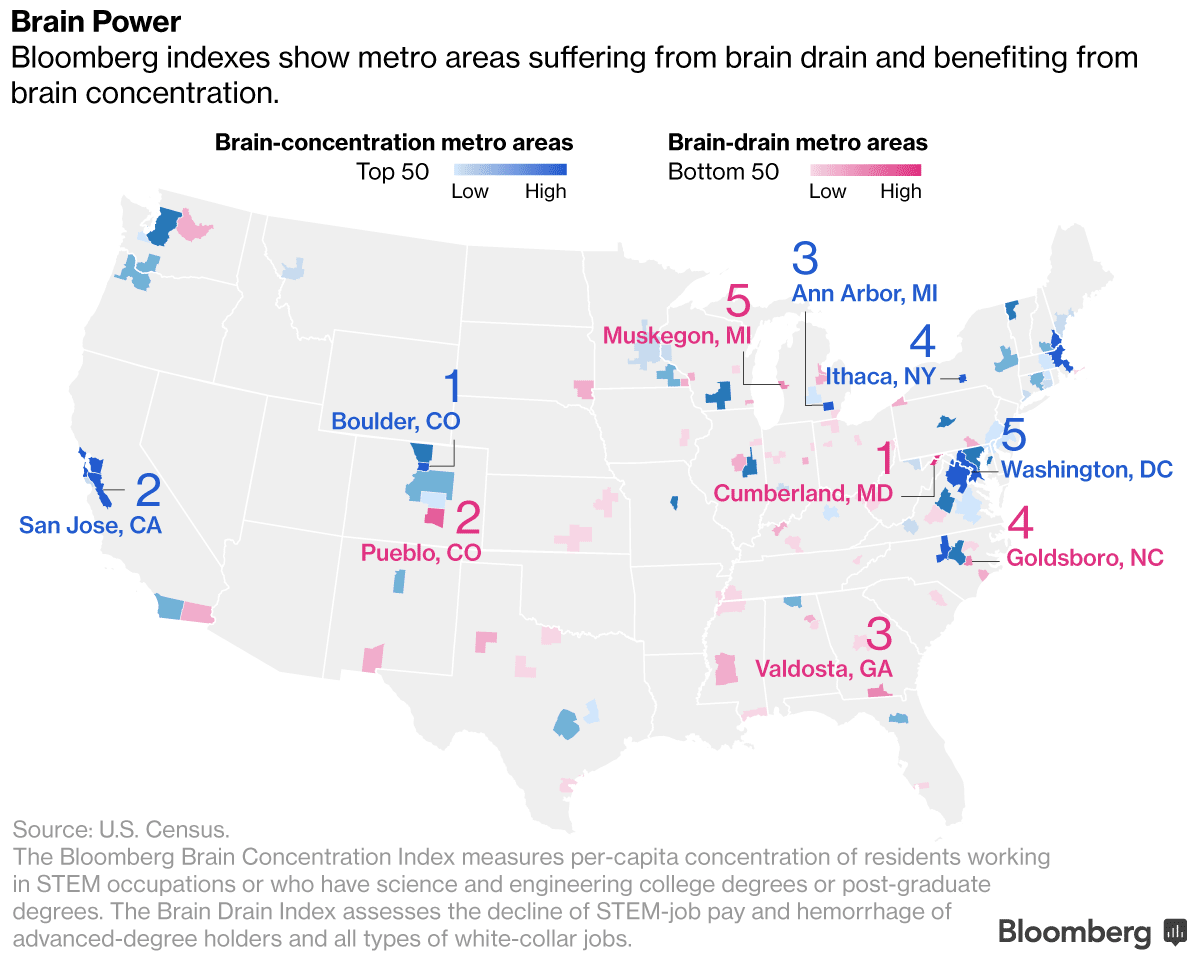
Credit for the piece goes to Vincent Del Giudice and Wei Lu.
A few weeks back a fire raged through a communal, creative warehouse in Oakland. The fire claimed the lives of over thirty people. But why? We have the New York Times behind this piece which attempts to explain just what happened that night through a nice mixture of diagrammatic illustrations and photography.
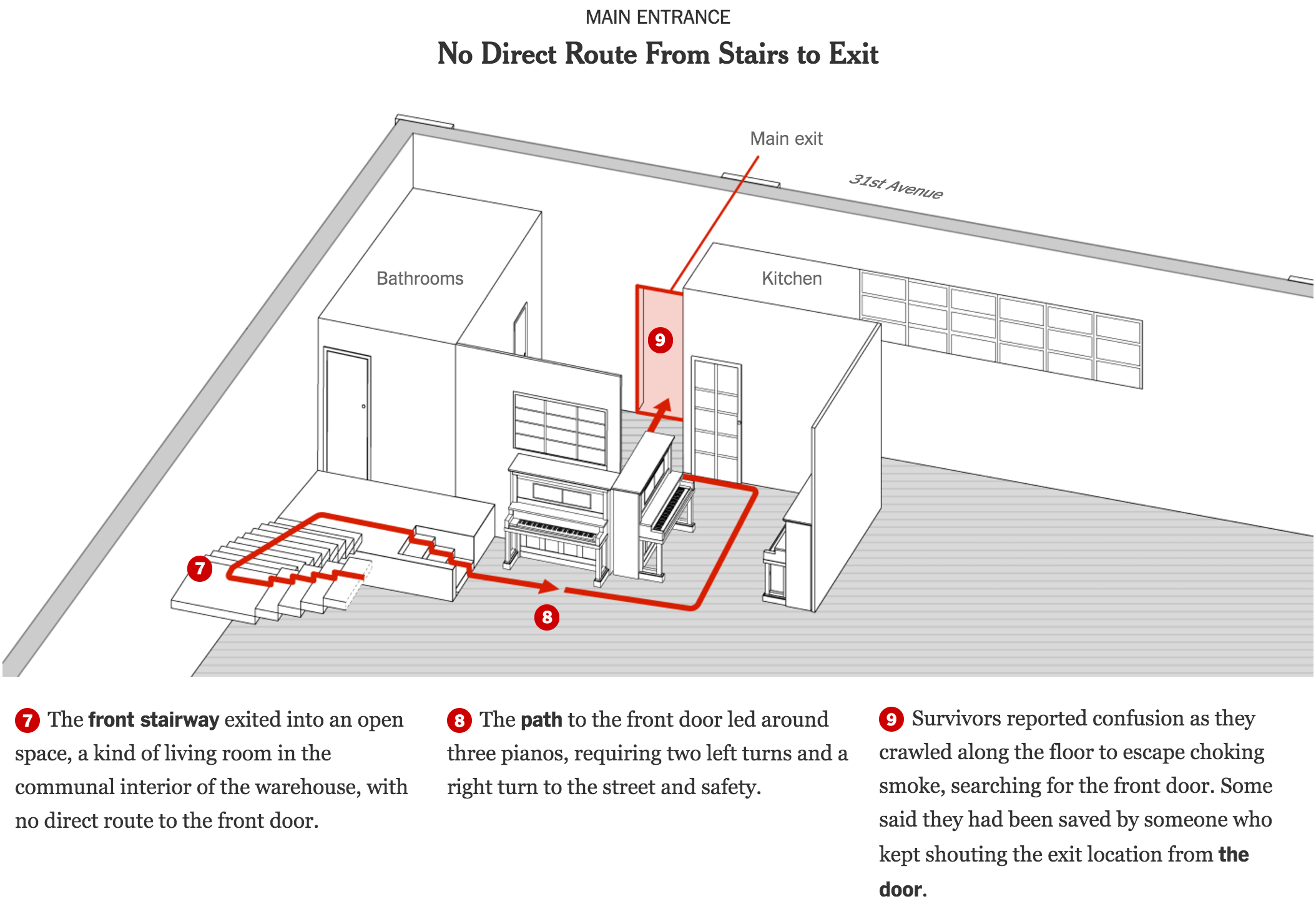
Credit for the piece goes to Ford Fessenden and Anjali Singhvi.
On the lighter side of things we have today’s post on income inequality. Always a lighter subject, no? Thanks to Jonathan Fairman for the link.
Herwig Scherabon designed the Atlas of Gentrification as a project at the Glasgow School of Art and it was picked up by Creative Review. It displays income as height and so creates a new cityscape of skyscrapers for the wealthy and leaves lower income residents looking straight up. His work covered the US cities of New York, Los Angeles, and Chicago. The image below is of Chicago. I probably was living in a cluster of mid-rise buildings despite living in a five-story building.
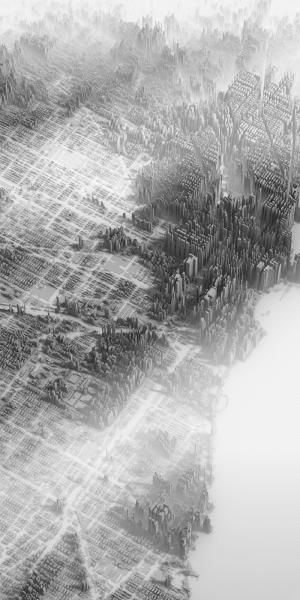
Credit for the piece goes to Herwig Scherabon.
Several days ago OPEC, the Organisation of the Petroleum Exporting Countries, announced a cut in production to raise the price of oil. This was big news because Saudi Arabia and others had kept the price low in an attempt to undercut the nascent American shale oil and gas industry. Well…that didn’t work.
In this article from Bloomberg, you can see how the United States could be positioned to become an energy superpower. But, they also lay out the various snags and pitfalls that could dim that outlook. This map from the article details the destinations thus far of America’s natural gas, in liquefied state.

Credit for the piece goes the Bloomberg graphics department.
By just a hair under 20 percentage points, Italian voters—with a 70% turnout rate—voted down the reform package of soon-to-be-former Prime Minister Matteo Renzi. While the election was focused narrowly on a set of political reforms for Italian government, e.g. reducing the number of senators, the vote was unofficially seen by many as a test of the strength of anti-establishment populists in Europe. Note wins by such groups in Brexit and Donald Trump. In Europe this is a particularly important barometer reading because of 2017 elections in the Netherlands, France, and then Germany.
I had been looking for some online results trackers, in English, last night but found little. There was, however, this page from Bloomberg. The key thing for me is the link between the regions on the map and the section on the bar chart.
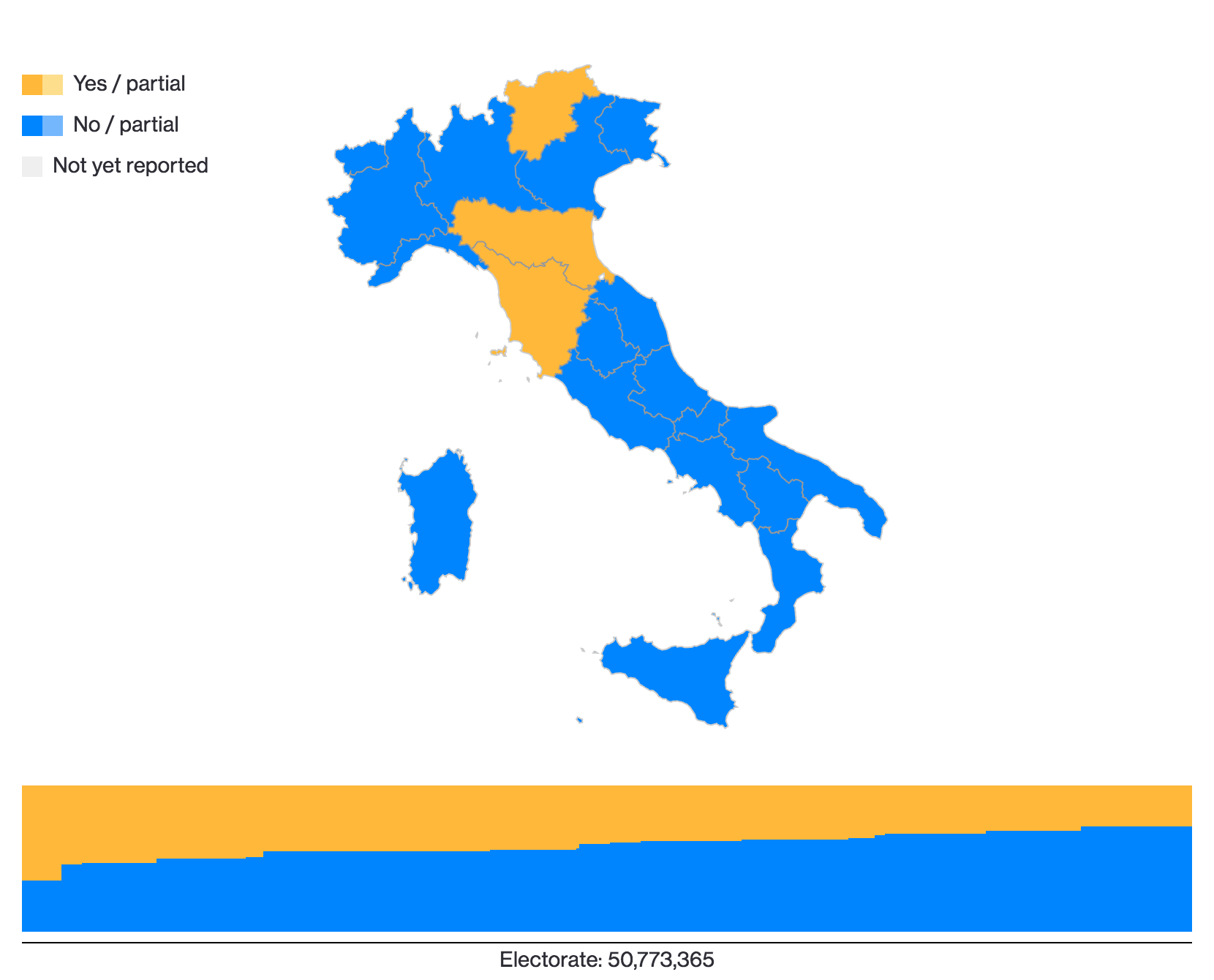
Credit for the piece goes to Bloomberg’s graphics department.
This is sort of an early Friday post that follows up from my post on David Petraeus yesterday. Today’s comes from Hilary Sargent, once of the Boston Globe. It diagrams the network that ultimately resulted in the conviction I mentioned yesterday.
For President-elect Donald Trump’s campaign to run so heavily against Secretary Clinton for mishandling classified information, his potential choice for Secretary of State did worse. He was actually convicted of mishandling classified information.

Credit for the piece goes to Hilary Sargent.
I am very closely following the transition of power from President Obama to President-elect Trump. And one of the very surprising news stories has been that Trump is considering David Petraeus for Secretary of State.
Given the controversy and campaign rhetoric against and surrounding Hillary Clinton for alleged mishandling of classified information as Secretary of State, I wanted to set the record straight with this one dataset comparing Petraeus to Clinton on their reckless handling of classified information.
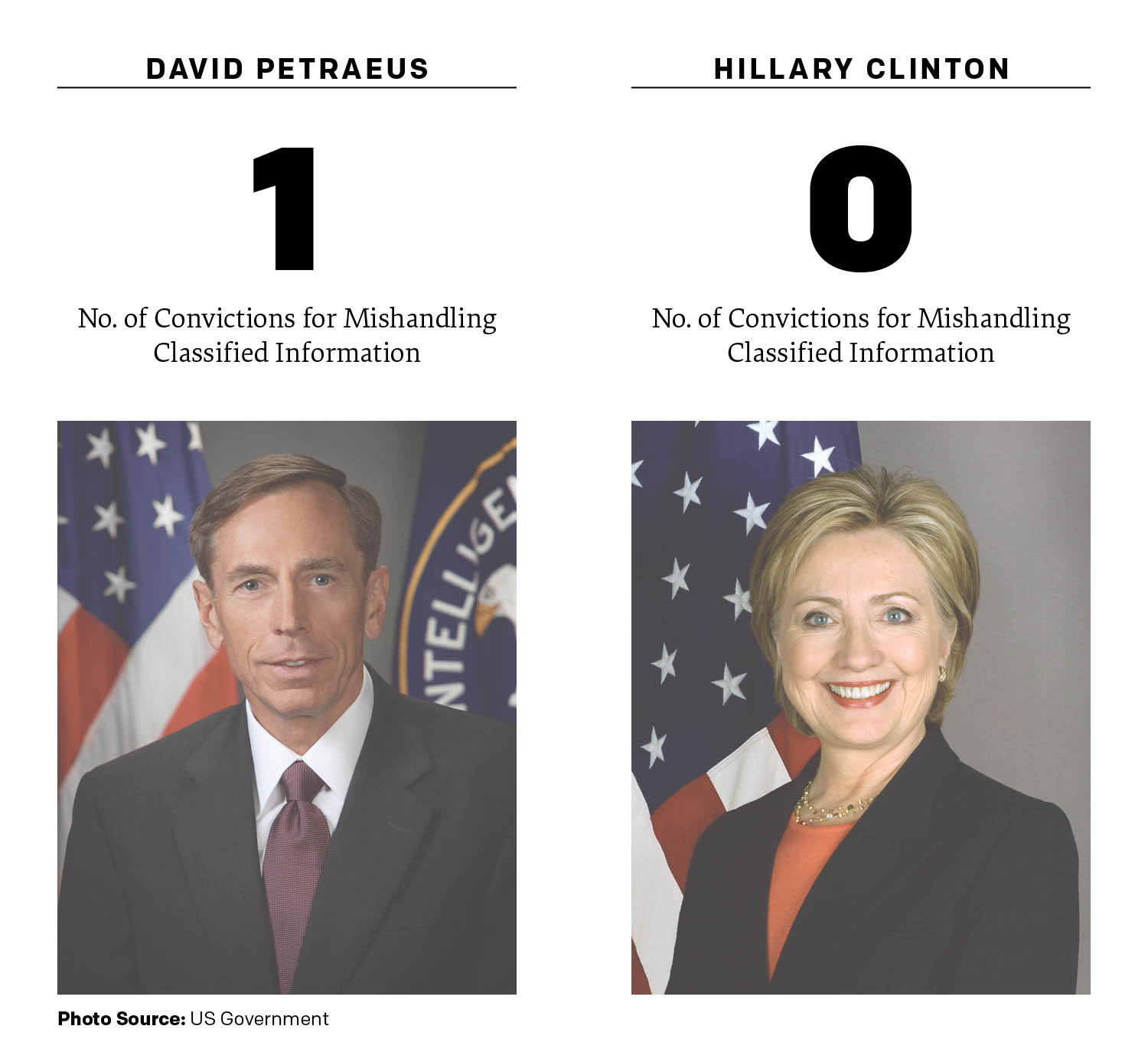
Going by the data, if your claim was that Hillary Clinton could not be trusted with national secrets, neither can David Petraeus. Move along, Mr. Trump.
Credit for the piece goes to me.
Today’s post is a choropleth map from the Washington Post examining diversity in the United States and how fast or slow diversity is expanding. Normally with two variables one goes instantly to the scatter plot. But here the Post explored the two variables geographically. And it holds up.
The colours are perhaps the only part holding me up on the piece’s design. Are blue and yellow the best two colours to represent level of diversity and growth? I lose some of the gradation in the yellows, especially between the big increases in diversity. Can I offer a better solution? No, and maybe there is not. But I would love the chance to explore different palette options.
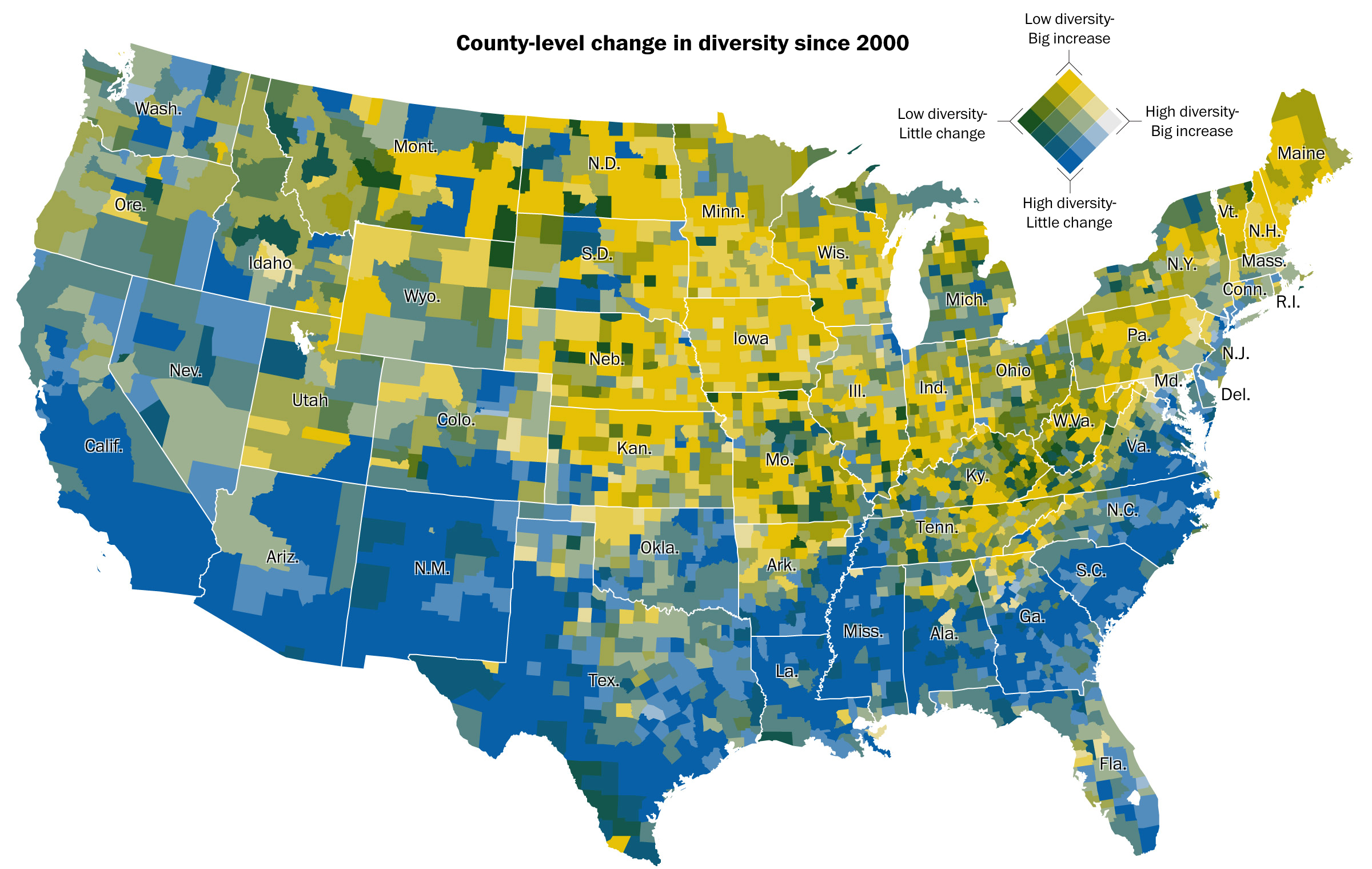
As you well know, I am not a big fan of always plotting things on maps. I call them the silver bullet. However, in this instance, there are clear geographic patterns to the four different scenarios. Of course this soon after the election I would love adding a third variable: how the counties voted in the presidential election. Maybe next time.
Credit for the piece goes to Dan Keating and Laris Karklis.